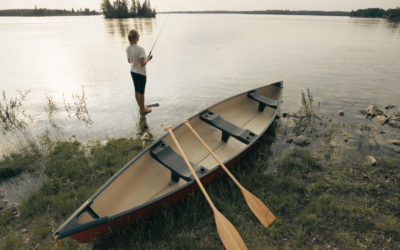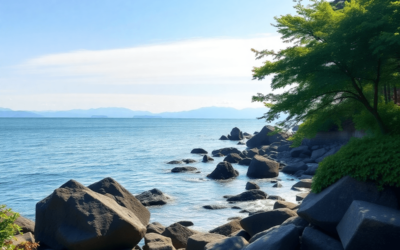
Introduction
Indigenous heritage in Western Canada offers a rich tapestry of cultural experiences that reflect the diverse traditions, languages, and histories of Indigenous peoples. With nearly 200 distinct Indigenous communities and more than 30 unique languages spoken in British Columbia alone, the region stands as a vibrant mosaic of cultural diversity.
Exploring Indigenous cultures through unique experiences can foster a deeper understanding and appreciation for their rich traditions and histories. These immersive adventures allow you to connect with the land, people, and stories that have shaped Western Canada for thousands of years.
This article delves into 10 immersive cultural experiences that travelers can enjoy in Western Canada. Each experience offers a distinct perspective on Indigenous heritage:
- Guided Tours by Local Tribes
- Traditional Craft Workshops
- Cultural Festivals and Celebrations
- Visiting Indigenous Cultural Centers
- Experiential Learning through Storytelling
These experiences not only provide educational insights but also support sustainable tourism practices within Indigenous communities. Engage directly with local tribes, participate in traditional craft workshops, celebrate at cultural festivals, visit informative cultural centers, and listen to powerful storytelling sessions to truly immerse yourself in the rich Indigenous heritage of Western Canada.
1. Guided Tours by Local Tribes
Engaging in guided tours led by local tribes offers authentic experiences that immerse you in Indigenous culture. These tours are invaluable for understanding the unique perspectives and traditions of Indigenous communities.
Haida Gwaii Interpretive Tours
Experience the rich art and history of the Haida people through interpretive tours on Haida Gwaii. Knowledgeable Haida guides lead these tours, sharing personal stories and insights about their culture. You will learn about traditional Haida art forms, such as totem pole carving and weaving, directly from those who continue these practices today.
Blackfoot Crossing Historical Park
At Blackfoot Crossing Historical Park, storytelling traditions come alive. Participate in interactive sessions with Blackfoot elders, who pass down age-old narratives using captivating storytelling techniques. This experience not only educates but also allows you to connect deeply with the spiritual and historical significance of the Blackfoot people.
These guided tours provide an intimate look into the lives and histories of Indigenous communities, enriching your appreciation for their enduring cultural heritage.
2. Traditional Craft Workshops
Traditional crafts are important for preserving cultural heritage and promoting sustainable practices in Indigenous communities. These workshops provide hands-on learning opportunities, allowing participants to fully immerse themselves in the traditions and skills that have been passed down through generations.
1. Cedar Bark Weaving Workshops by Coastal Indigenous Artisans
Join workshops led by skilled coastal Indigenous artisans, offering you the chance to learn the intricate art of cedar bark weaving. You’ll be taught the delicate techniques and cultural significance underpinning this age-old craft, along with sustainable harvesting methods that respect the land and tradition.
2. Hide-Tanning and Drum-Making Workshops with Indigenous Nations
Explore the age-old techniques of hide-tanning and drum-making with experienced artisans from diverse Indigenous Nations. These workshops do more than teach you craft; they immerse you in the spiritual essence of drum-making, each beat echoing the heartbeat of Mother Earth.
These workshops go beyond being mere craft sessions; they provide immersive experiences that cultivate a deeper appreciation for Indigenous traditions and sustainable living practices.
3. Cultural Festivals and Celebrations
Cultural festivals are essential for showcasing the vibrant diversity of Indigenous traditions and fostering community spirit. These gatherings offer an immersive experience where you can witness traditional ceremonies, music, dance, and culinary delights, all while engaging with local communities.
Kamloopa Powwow
One standout example is the Kamloopa Powwow, one of the largest powwows in British Columbia. This event features:
- Mesmerizing dance competitions
- Live music performances
- Traditional food vendors
The Kamloopa Powwow creates a lively atmosphere for all attendees to enjoy together as a celebration of Indigenous culture.
Indigenous Peoples Day
Another significant celebration is Indigenous Peoples Day, observed across Western Canada. This day highlights various events organized by local communities to honor the resilience and contributions of Indigenous peoples throughout history. Activities you can expect include:
- Traditional ceremonies
- Art exhibitions
- Educational workshops
These festivals provide an excellent opportunity to immerse yourself in Indigenous Heritage: Unique Cultural Experiences in Western Canada.
4. Visiting Indigenous Cultural Centers
Cultural centers are important places where people can learn about Indigenous heritage. These centers have interesting exhibitions and informative workshops that help promote understanding between Indigenous peoples and non-Indigenous visitors.
U’mista Cultural Centre
The U’mista Cultural Centre in Alert Bay has a wide range of potlatch artifacts on display. This collection offers valuable insights into the rich ceremonial practices of the Kwakwaka’wakw people and their unique cultural heritage.
Head-Smashed-In Buffalo Jump
Another significant cultural site is Head-Smashed-In Buffalo Jump, which has been recognized as a UNESCO World Heritage site. Here, visitors can explore interactive displays that explain the historical importance of this ancient buffalo hunting ground used by Plains Nations, including the Blackfoot people.
5. Learning through Experience and Storytelling
Storytelling is a powerful way to pass down knowledge, values, and perspectives within First Nations cultures. It allows important aspects of their history and cultural identity to be preserved through oral traditions.
Examples of storytelling events:
- Storytelling Sessions at Fort Edmonton Park: Fort Edmonton Park often hosts events featuring captivating performances by local storytellers from various Indigenous nations. These storytellers share their unique perspectives on contemporary and historical issues, offering a compelling exploration through narrative.
- Guided Tours: Many guided tours incorporate storytelling as a central component, providing visitors with a deeper understanding of Indigenous heritage. Local guides often share personal anecdotes and ancient tales that bring the landscape to life.
These storytelling events not only educate but also foster a sense of connection and respect for the traditions and experiences of First Nations communities.
6. Nature Walks and Environmental Education Programs Led by Local Tribes
Exploring the land with Indigenous guides offers a profound way to connect with nature and understand its spiritual significance. Many Indigenous communities view the land as a sacred entity that provides physical sustenance and spiritual enrichment. This perspective underscores the importance of protecting and preserving these environments for future generations.
Examples of immersive experiences include:
- Guided hikes with the Tsleil-Waututh Nation: Participants explore local natural areas and urban landscapes, learning about traditional ecological knowledge systems. These hikes often highlight sustainable resource management practices that allow fish and wildlife to thrive even in close proximity to urban environments.
- Environmental stewardship initiatives: Local tribes like the Haida Nation offer programs that teach visitors about their efforts in conservation and environmental protection. Activities may include beach clean-ups, reforestation projects, and educational workshops on the importance of biodiversity.
Such experiences emphasize the interconnectedness of all life forms within an ecosystem, fostering a deeper appreciation for Indigenous practices in environmental stewardship.
7. Culinary Experiences Featuring Local Ingredients Used Traditionally By Different First Nations Groups
The rise in culinary tourism initiatives promoting Indigenous cuisine reflects travelers’ growing interest in experiencing authentic flavors. These foodways, shaped over centuries of interaction between Indigenous communities and colonial settlers, bring new ingredients and cooking methods to the table.
Hands-on cooking classes are a popular way to delve into this rich culinary heritage. Cooking Classes with Indigenous Chefs on Vancouver Island: Participants have the chance to make smoked salmon chowder using freshly caught fish from local waters. These classes, often led by talented local chefs, emphasize sustainability practices to ensure that marine species remain abundant for future generations.
Regional cuisines carry unique characteristics influenced by climate, geography, and soil types. For example:
- Smoked Salmon Chowder: A staple on Vancouver Island, reflecting the island’s rich marine resources.
- Bannock: A versatile bread enjoyed across various First Nations, often served with local berries or fish.
- Wild Game Stews: Featuring meats like bison or venison, highlighting the importance of hunting traditions.
These culinary creations are crafted by skilled artisans who have honed their techniques over years of dedicated practice. The knowledge is often passed down through families, maintaining a rich lineage of culinary expertise.
8. Art Exhibitions Showcasing Works by Contemporary Artists from Diverse Backgrounds Within the Community
Artistic expressions showcased in public spaces, galleries, museums, and venues located in both urban and rural settings highlight the richness of Indigenous cultures. These exhibitions often serve as platforms for ongoing dialogues within the contemporary art scene, addressing issues like representation, identity politics, colonialism, and decolonization.
Key Themes Explored:
These themes reflect broader historical contexts and the complex legacies of colonial pasts that continue to shape the lived realities of individuals and communities today. Art becomes a medium through which these histories resonate deeply, informing how people navigate their everyday lives.
Notable Example:
Contemporary Voices at the Vancouver Art Gallery:
- Focus: Works from emerging and established artists from various cultural backgrounds.
- Themes: Displacement and belonging, often exploring colonial histories and contemporary Indigenous identities.
- Mediums: Painting, sculpture, installation, video, performance art.
This exhibition challenges traditional definitions of art, urging viewers to reconsider preconceived notions about aesthetics and the value judgments often attached to cultural production.
By engaging with these exhibitions, you gain insights into how Indigenous artists use their work to reclaim space and voice within a society grappling with its colonial history.
Conclusion
Immerse in Indigenous Heritage: Unique Cultural Experiences in Western Canada
Exploring the various aspects of Indigenous heritage in Western Canada offers a unique chance to connect with diverse cultures and traditions. By participating in these immersive experiences, you can:
- Foster a deeper understanding: Learn about the rich history, languages, and practices of Indigenous communities.
- Promote mutual respect: Gain insights into the values and worldviews that shape these vibrant cultures.
- Encourage harmony and coexistence: Participate in activities that highlight the importance of preserving and celebrating Indigenous heritage.
Key Takeaway: Each experience—whether through guided tours, traditional craft workshops, cultural festivals, visits to cultural centers, or storytelling events—provides a distinct perspective on Indigenous heritage. This journey not only enriches your own understanding but also contributes to a broader vision of unity and respect.
Join the ongoing narrative woven by generations of Indigenous peoples. Seize the opportunity to immerse yourself in the one-of-a-kind cultural experiences offered in Western Canada, and uncover the deep beauty and wisdom that Indigenous heritage has to share.




